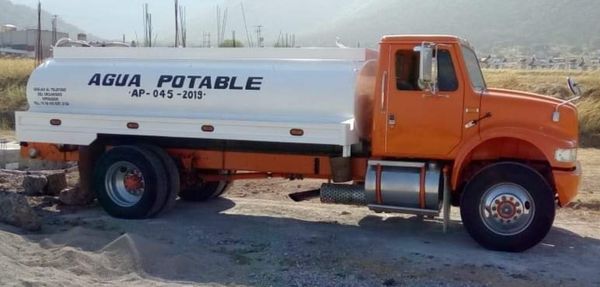Water Security – An interim report on desalination at Las Mañanitas
This is an interim report to Las Mañanitas Owners on using desal to increase water security
What about our current water supply?
- All new hotels along the Carretera Transpeninsular between San Jose del Cabo and Cabo San Lucas are required to provide their own desalination (“desal”) plant. We are grandfathered, so we aren’t required to do it. But it might be wise.
- Los Cabos is short on water.
- Since 2006, it has been using desal in Cabo San Lucas to supplement wells and aquifers (which are running dry).
- Our water utility (OOMSAPAS) regularly rations water, and there have been several times in the three years I’ve lived here (full time) when David has had to arrange for private delivery of water using tanker trucks. Note: that water is not cheap … and it’s sometimes not available.
- There is another desal plant planned … for 2026!
- In February, the BCS decreed that Cabo San Lucas had to restructure its water supply to protect the local aquifer. See also, this.
- The whole BCS state is in water trouble.
- Last month, Gringo Gazette did a major summary of Water Security in Los Cabos, which I reprinted in full on our lasmananitascondos.com blog here.
- Las Mañanitas has a good water system. In May, Community Manager David Alanis showed me the three cisterns (one for each Phase) that holds about 100 cubic meters (m3) of water each ... or about 300 m3 total. The water, which comes almost every day by a pipe from OOMSAPAS, keeps the cisterns full most of the time, but on many occasions, David has had to ration landscaping water and/or buy truckloads of water, like this.

- Each of the cisterns interconnects with the other cisterns, so water can be shuffled where it’s needed.
- These cisterns then route the water to two places: up to the Units and out to the landscaping system.
- BTW, the water that goes up to the Units goes through a huge filter system – so Las Mañanitas water is not only clean when we get it, often from desal plants and mountain aquifers, but also filtered! No wonder most people don’t bother with bottled water here.
- Ask your realtor – do buyers ever ask about water? Let me know if anyone thinks it is NOT a concern. Extra credit: Ask them how they answer the question a) generally, and b) when they are representing a Las Mañanitas property.
- Now ask them how they’d feel about selling your unit if Las Mañanitas HOA was running its own desal plant.
Tell us more about desal possibilities
- The Solar Committee re-directed the Board’s attention from photovoltaic as the primary focus to desal as worthy of close attention. My thanks to them for that.
- One of the committee members pointed David to TSG, a large company with a Los Cabos office and many years in the business. TSG has successfully built and operated some of the largest private desal plants in the area. We met with them about 6 weeks ago, and they gave us a preliminary proposal which made sense if you can accept certain assumptions.
- We are NOWHERE NEAR READY to present a project proposal to you, but I hope it will be fully vetted and evaluated in time for our November meeting. The Board will not present it until and unless it makes hard-dollar, economic sense. That is, we need to know that the savings captured by making our own water will more than offset the operating costs, including financing, depreciating and maintaining the capital equipment.
- I’ll share with you some of the preliminary information – but please don’t take any of this as gospel until we can verify everything and ensure viability even if some of the assumed results fall short. ,Here are some early data points:
- In 2021 Las Mañanitas used 36,660 m3 per year for HOA needs (pools, landscaping, car wash, etc.) The Owners used an additional 12,507 m3 in their Units during the same period. That’s a total of 45,167 m3 annually, or 125 m3 per day, on average.
- Here’s a fun fact: because landscaping and pools use more water during the summer months, and people in the Units use more water during the winter, the load on a desal plant supplying water to everyone at Las Mañanitas is relatively even all year.
- Desal equipment sufficient to provide 125 m3 per day would cost just under $500k in capital, taxes and installation. It would require about 45 m2 (that square meters!) of floor space. Well, whaddaya know? – That Second Floor Storage area on the New Garages is 111 m2; so, we could put the desal equipment at the south end of that building and still have room for storage!
- There are other benefits to the south end of the Second Floor Storage area: First, you can run small pipes out the southwest corner and then along the western boundary of the property (behind the car wash, along the arroyo) until you get to that sandy area between the Phase II pool and the beach. TSG tells us that two buried wells (not visible from the surface) about 50 yards apart and on the order of 20-30 feet deep will allow us to pull in salt water from the Sea on an INTAKE pipe leading back to the desal equipment and use the other well as an EXHAUST well taking the concentrated, briny effluviant away from the desal plant.
- In addition to an INTAKE of salty water and an EXHAUST of briny water, the desal plant also creates lovely fresh water … which can be stored easily in the cistern under the garage. Moreover, the cistern for Phase III is directly across the driveway from the southeast corner of the New Garages, Second Floor Storage area and cistern. It will be very easy to tie into the Las Mañanitas water system from there. It’s literally only about 12 meters away!
- The last thing you need to run the desal equipment is electricity. CFE has a major power hub only about 10 meters away from the southeast corner of the New Garages! And if solar voltaic might have a role in the future, the flat roof of this New Garage building and the huge roofs of the Old Garages and the employee break/lockers building is very nearby.
An early mentor of mine advised me to “go for the ‘no’ early.” He meant that if a deal was not going to be feasible, the faster you can determine that, the better. There is a possibility that the underground geology here is so bad we can’t get enough INTAKE water, or the EXHAUST water is so problematic that the government won’t give us a permit. (We need a permit to do all this.) So, we are getting a bid on having TSG drill some small test wells to make sure. If it’s feasible, it’s likely we’ll go button down the final numbers for upfront capital expense and forecasted operating expenses and present the project case at the November meeting.
